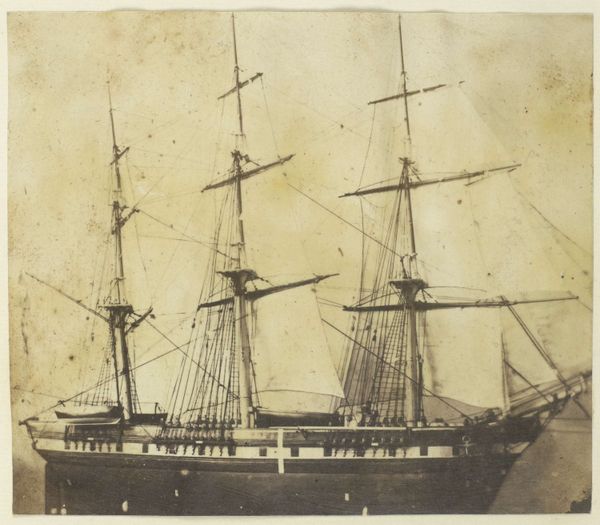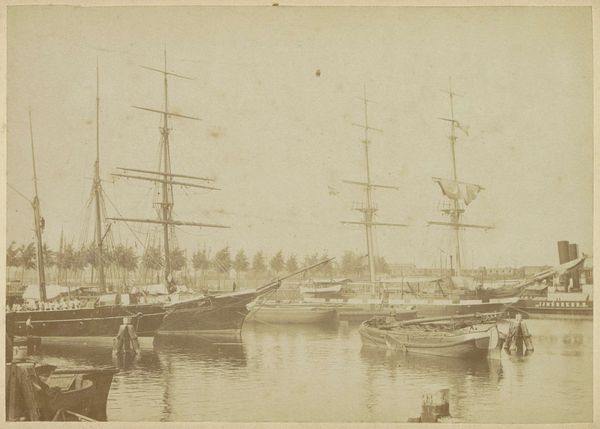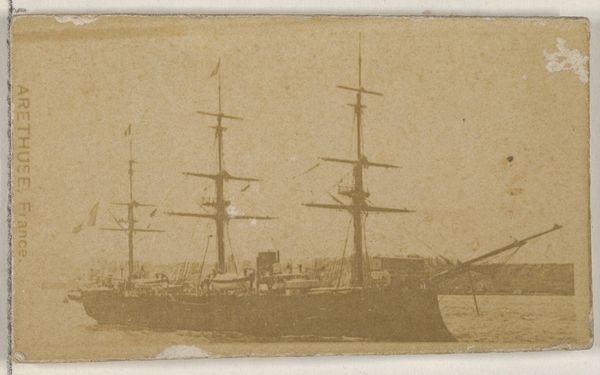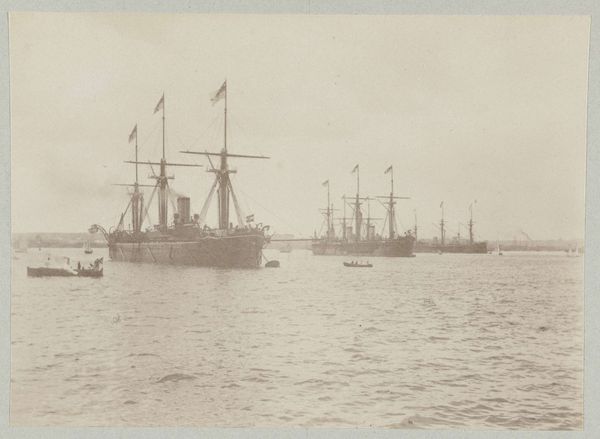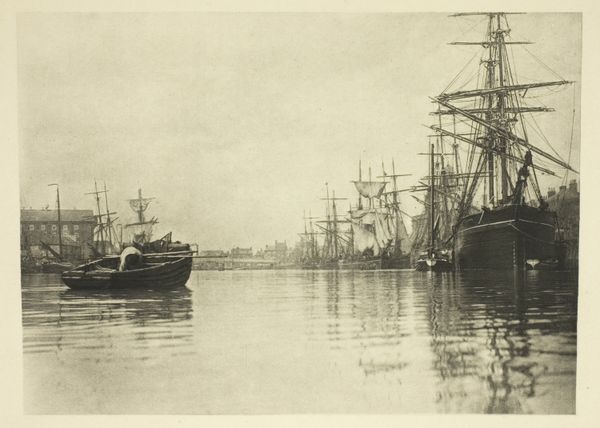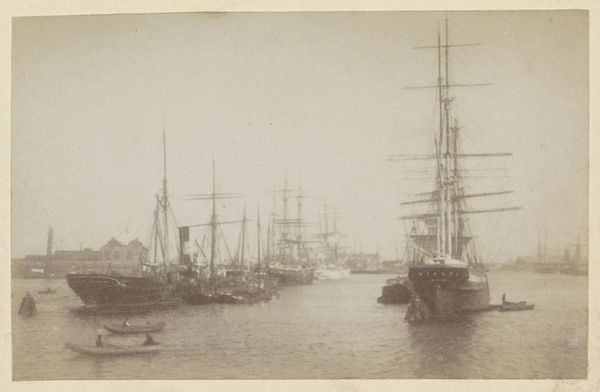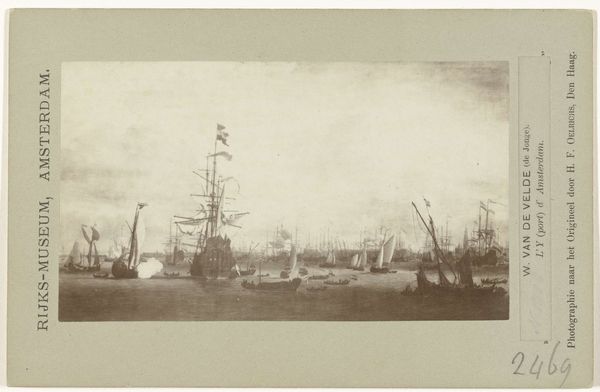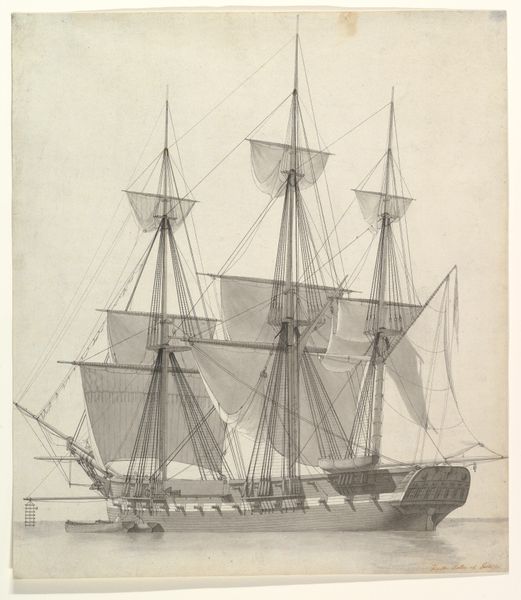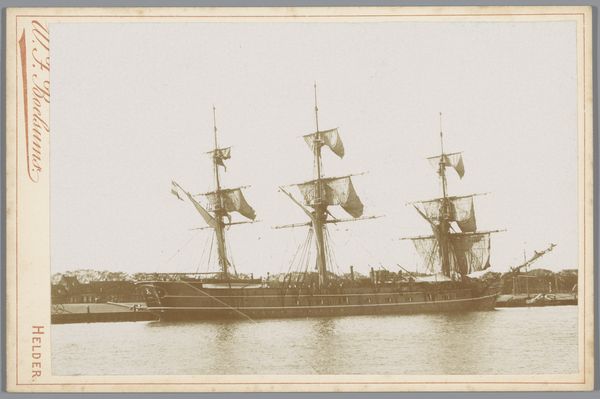
Dimensions: 30 × 41.3 cm (image/paper); 51 × 64.2 cm (album page)
Copyright: Public Domain
Curator: This is Gustave Le Gray's "Ships in the Harbor at Sète," created in 1857. The photograph is a gelatin-silver print currently held at The Art Institute of Chicago. Editor: It has such a serene, almost ethereal quality, doesn't it? The tonal range is so subtle, creating a calming rhythm across the composition. Curator: Le Gray was indeed fascinated by capturing light and atmosphere, which resonated with the burgeoning Impressionist movement. His innovative use of waxed paper negatives allowed for remarkable detail in both the sky and the sea, a technical feat at the time. This was significant given photography’s rise as a tool of documentation but also artistic expression in depicting French port cities. Editor: And the composition itself - the masts reaching upward create a striking visual counterpoint to the still water. Notice how the intricate rigging forms a web-like pattern against the sky, balancing the solidity of the ship hulls reflected in the water. The use of light, particularly as it illuminates the rigging is also stunning, as is the dark hull, adding another kind of counterpoint. Curator: Absolutely, Le Gray was quite deliberate in framing this particular perspective of Sète. The composition implies France's maritime power and commercial vitality during the Second Empire. However, beyond just documenting reality, he curated the image, controlling elements to emphasize specific messages related to trade, industry, and the representation of the state. Editor: There's also a textural richness in the photograph - you can almost feel the dampness of the sea air, and hear the gentle lapping of the water against the hulls. It invites you to slow down and absorb every detail. Curator: He certainly crafted an engaging and powerful image that is more than simply representational, highlighting the technological achievements of the time as well as its imperialist ambitions. His images have thus taken on another meaning in their post-colonial framing, and how it allows people to think differently about our maritime pasts. Editor: That interplay of industry and artistry is why Le Gray's work still fascinates. His work forces us to look beyond the technical and political conditions to the aesthetic impact of visual composition, allowing each to transform one's understanding. Curator: Indeed, "Ships in the Harbor at Sète" serves as a perfect testament to the transformative power that art possesses, irrespective of one's unique viewpoint.
Comments
No comments
Be the first to comment and join the conversation on the ultimate creative platform.
